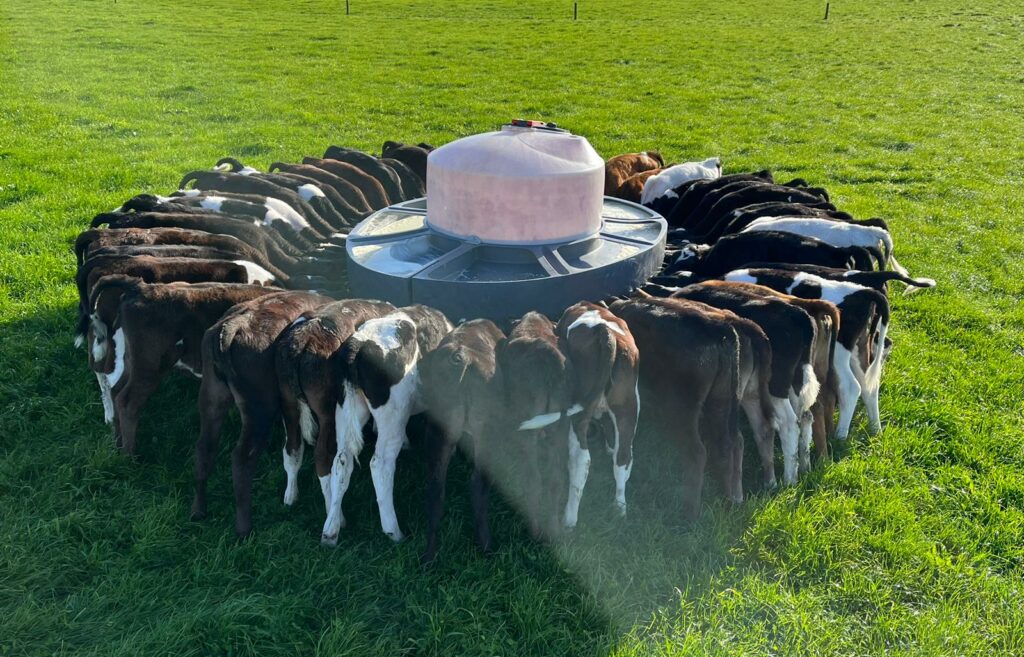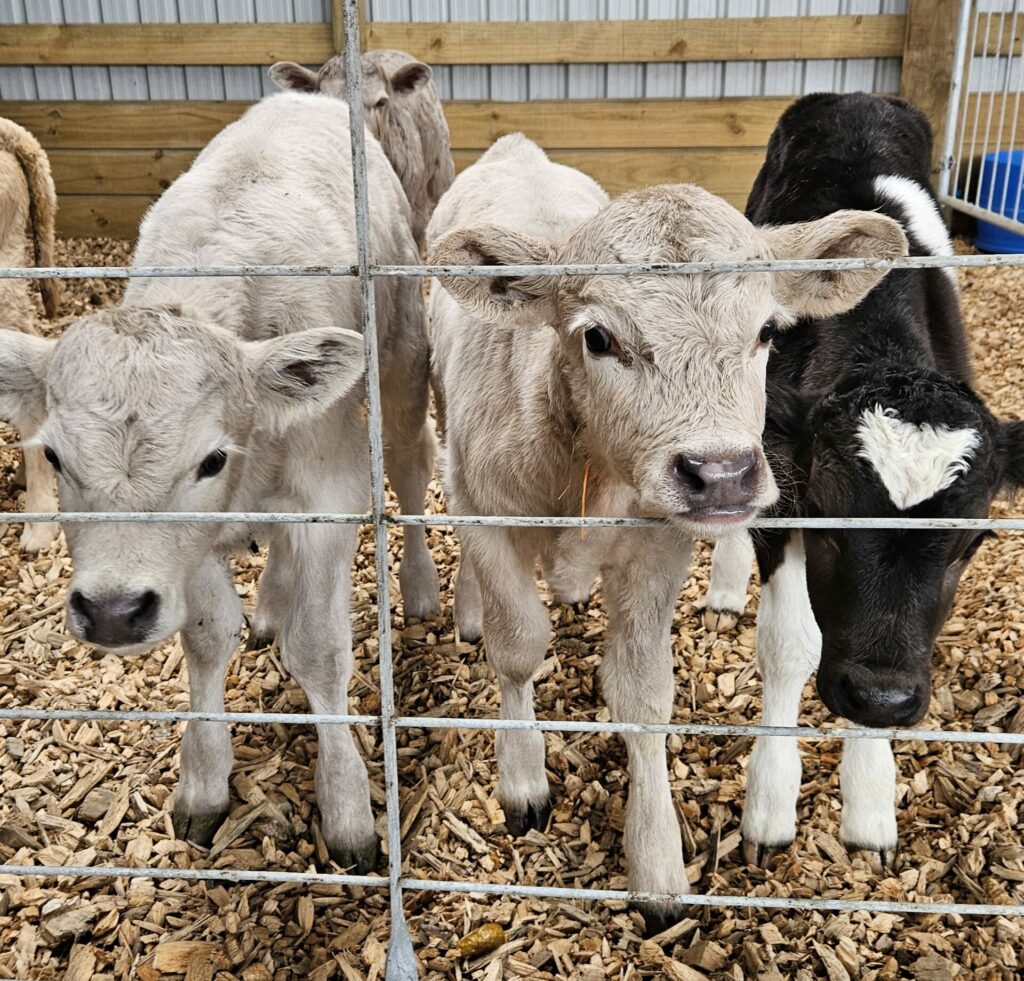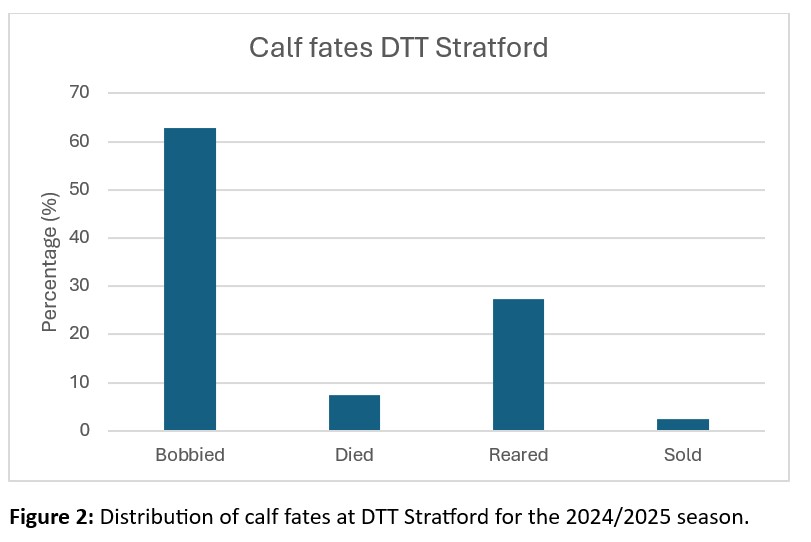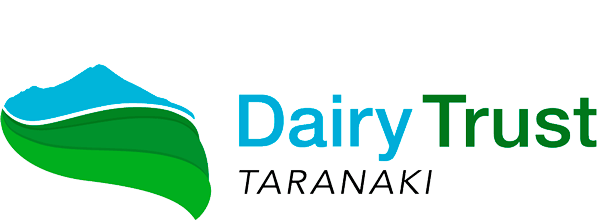23 Feb Reduction of bobby calves on the Dairy Trust Taranaki Kavanagh farm

In this blog post we will share the strategies Dairy Trust Taranaki has used to reduce the number of bobby calves on our DTT Kavanagh farm and the results so far.
Why?
Sending 4-day old calves on the bobby truck is a practice not well perceived by the public and farmers themselves don’t like putting calves that age on the truck either. To prevent non-replacement calves being bobbied, they need to be of high value i.e. they need to be suitable for beef or bull rearing. Another value stream could be veal, however there is currently no market in New Zealand. It is most likely that there will be more regulations coming related to bobby calf practices in the future. This poses a big risk and challenge to the dairy industry and a solution has not yet been found. It is paramount that options will be available to dairy farmers before such regulations might come into effect. There probably won’t be one solution that fits all farms and cross-industry collaboration will be required as there is simply not enough land available to rear the extra stock (about 1.9 million bobby calves per year).
How?
DTT Kavanagh is New Zealand’s Net Zero Pilot Farm and is located on the outskirts of Hawera along the coast. The pilot project is a demonstration of a journey towards a profitable net zero carbon emissions dairy farm. This trial is run by Dairy Trust Taranaki in collaboration with Nestlé and Fonterra.
Following on from the work Odette Chauncy completed across three of the Dairy Trust Taranaki farms in 2021/2022 as part of her Colin Holmes scholarship, we have continued to monitor the fates of all calves born at the Dairy Trust Taranaki farms.
At DTT Kavanagh this season we calved 538 Friesian/Friesian-cross cows with a stocking rate of 2.6 cows/ha. The cows were in-calf to either a cross-bred replacement calf (from sexed semen) or a beef breed non-replacement calf. The heifers were in-calf to cross-bred calves (conventional, non-sexed semen) or Hereford calves from natural mating.
In the figure below is a summary of the distribution of calf fates from the 2024/2025 calving season. 20 % of the calves were reared for replacement, 69 % of the calves were sold and only 5 % of the calves were bobbied.

The majority of the replacement calves came from mixed aged cows from sexed semen and only a small number from the heifers.
Of the calves that were sold, 9.5 % were Hereford and the rest was Charolais. These calves were sold to a large-scale calf rearing business when they were 5 – 10 days old.
Of the 5 % bobby calves the majority were Hereford bull calves from the R2 heifers that we were not able to sell. In addition, cross-bred bull calves from the R2 heifers were also bobbied.
Reduction of bobby calves down to 5 % is a great result and a big step in the right direction. This is a reduction from 20 % bobby calves the previous season. The following strategies were used to achieve this result:
- Cross-bred sexed semen was used on the top 50% BW cows while the bottom BW cows received beef semen (Charolais and a small number of Hereford). This strategy helps to get better replacement calves, thereby increasing the gentic merit of the herd while also significantly reducing the number of low-value cross-bred bull calves.
- The R2 heifers underwent a synchronisation program and were inseminated with conventional, non-sexed cross-bred semen. Low birthweight Hereford bulls joined the heifers a week after insemination to service any heifer that did not conceive. This allowed for breeding replacement calves from the R2 heifers to speed up the genetic gain of the herd as this usually is the group with the highest genetic merit. This strategy also reduces the number of bobby calves as R2 heifers are mainly mated to jersey bulls resulting in low value calves.

Charolais calves at DTT Kavanagh.
What’s next?
In the current seasons (2024/2025) the focus was on further reducing the number of replacement calves coming from low BW cows and further increasing the value of the non-replacement calves.
When using sexed semen, you are required to use a set number of sexed semen straws every day. This means on days when there are not enough top BW cows on heat those straws are used on lower BW cows to not waste them (they are expensive!).
This season we reduced the number of sexed semen straws per day, but increasing the period cows were inseminated with sexed semen by one week (from 3 to 4 weeks). This will help reduce the number of sexed semen used on lower genetic merit cows.
This year DTT Kavanagh joined Beef and Lamb’s Dairy Beef Progeny Testing (DBPT) program. The aim of this program is to identify beef sires that are beneficial to both, the dairy and the beef industry. This means selection for short gestation and low birthweight genetics which produce progeny that finish well with high value carcass characteristics. The focus is on individual sires rather than a certain breed of beef.
The bottom BW cows at DTT Kavanagh have been inseminated with semen from sires of several different beef breeds which have been selected by the program. Previous work of the DBPT has shown that the individual sire potential has significantly more impact on the performance of the calf than just the breed of the sire or the dam. There was significant variance between the birth weight of a calf and it’s 600 day weight. Using semen from sires proven through the DBPT program will give dairy farmers as well as calf rearers and beef finishers the confidence that they will receive a calf which benefits each of their systems.
The reduction of bobby-calve numbers might seem an even bigger challenge for jersey herds, who are currently struggling to find rearers for their non-replacement calves. This is very obvious from the below graph which shows the distribution of calf fates from our jersey herd at our DTT Stratford farm, which had a significantly higher proportion of bobby-calves (over 60 %) than our DTT Kavanagh farm this season.

DTT Stratford also joined the DBPT program this season as the first jersey herd. It will be very interesting to see how these calves will be performing.
You can read more about the DBPT program here: Why dairy farmers should pick proven beef sires – NZ Dairy Exporter, Beef & Dairy Beef Progeny Tests | B+LNZ Genetics



